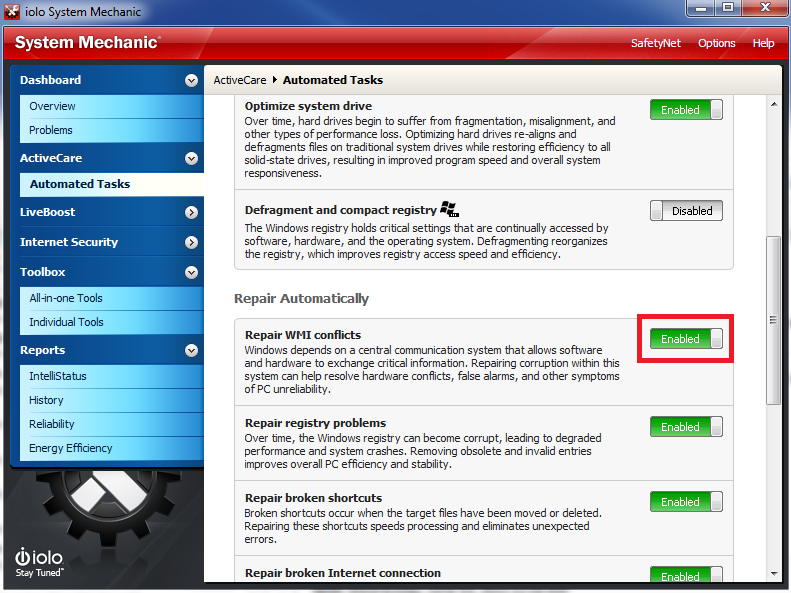Weird Glitches, Mysterious Hiccups and Bizzare Messages: What’s Going On in Your PC’s “Control Tower”?
Imagine an air traffic controller trying to be efficient with inaccurate data. Because airport reliability is utterly dependent upon tightly synchronized information, even small errors could quickly ignite a chain of arrival and departure delays, wrong gate assignments, and schedule-stopping airport security alarms. It wouldn’t take long for that airport to become a nightmare of unreliability.
Your PC has the equivalent of an air traffic controller system that relies on a set of data to keep things running. But when undetected errors pop up and mislead operations, your PC can exhibit frustrating slowdowns, unfounded alarms and irritating behavior.
 Because WMI Recalibrator repairs the root of a problem that pops up into a near infinite variety of frustrating symptoms, benefits can vary from user to user. But WMI Recalibrator can improve the entire Windows experience from start up to shut down.
Now you can significantly reduce or eliminate:
Because WMI Recalibrator repairs the root of a problem that pops up into a near infinite variety of frustrating symptoms, benefits can vary from user to user. But WMI Recalibrator can improve the entire Windows experience from start up to shut down.
Now you can significantly reduce or eliminate:
The airport inside your PC
Similar to an air control tower, modern PCs depend upon a central Windows communication system that allows software and hardware to exchange critical information before making decisions. This central communications system is called Windows Management Instrumentation (WMI) and it’s a massive framework within Windows that is critical to your PC’s ability to run smoothly. It’s also a basic point of trust for many system components and third-party applications so they can fly smoothly. iolo Labs observed that some apparently healthy computers exhibited strange, inexplicable behavior such as false error messages like “not enough memory for operation” when there was plenty of memory available, or mysterious hardware disconnection requiring a reboot, or odd software conflicts that caused stalls and crashes that hadn’t occurred before. Yet standard performance scans came back with normal results. After extensive tests and diagnostics, iolo Labs made a breakthrough discovery. The source of these mysterious problems had a common root: random corruption lurking deep within the Windows core data system itself. Because of the WMI’s complexity, errors can run deep and cause many different types of corruption from things such as installs, upgrades, downloads, deletions and malware attacks that target the WMI in an attempt to corrupt the effectiveness of security software. Once the issue was clear, iolo engineering set about creating a safe and effective way to identify and correct this corruption with typical iolo style: easy and automatic. This solution became one of the exciting key technologies released in System Mechanic 12. Meet the advanced reliability breakthrough your internal PC “control tower” has been waiting for. System Mechanic’s exclusive WMI Recalibrator is something completely new to the PC optimization scene: a landmark technology that can automatically detect and accurately repair WMI system errors on the fly, keeping the operating system and all your software, apps, and connected devices working in unison so they never miss a beat and your PC is always ready for action. Because WMI Recalibrator repairs the root of a problem that pops up into a near infinite variety of frustrating symptoms, benefits can vary from user to user. But WMI Recalibrator can improve the entire Windows experience from start up to shut down.
Now you can significantly reduce or eliminate:
Because WMI Recalibrator repairs the root of a problem that pops up into a near infinite variety of frustrating symptoms, benefits can vary from user to user. But WMI Recalibrator can improve the entire Windows experience from start up to shut down.
Now you can significantly reduce or eliminate:
- Application errors
- Security issues that just seem to pop up
- False alarms that send you scrambling
- System slows during heavy traffic use
- Post application install issues
- Unpredictable “busy pointers” that make you wait








